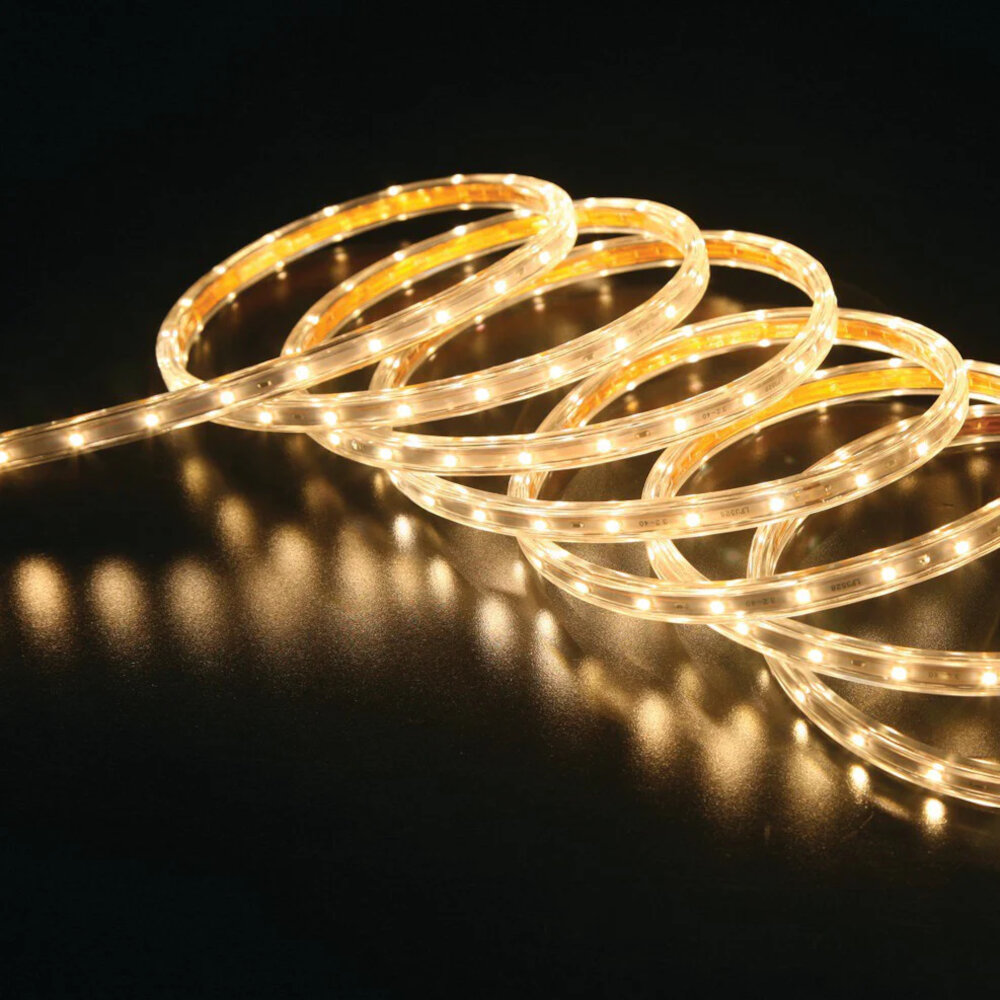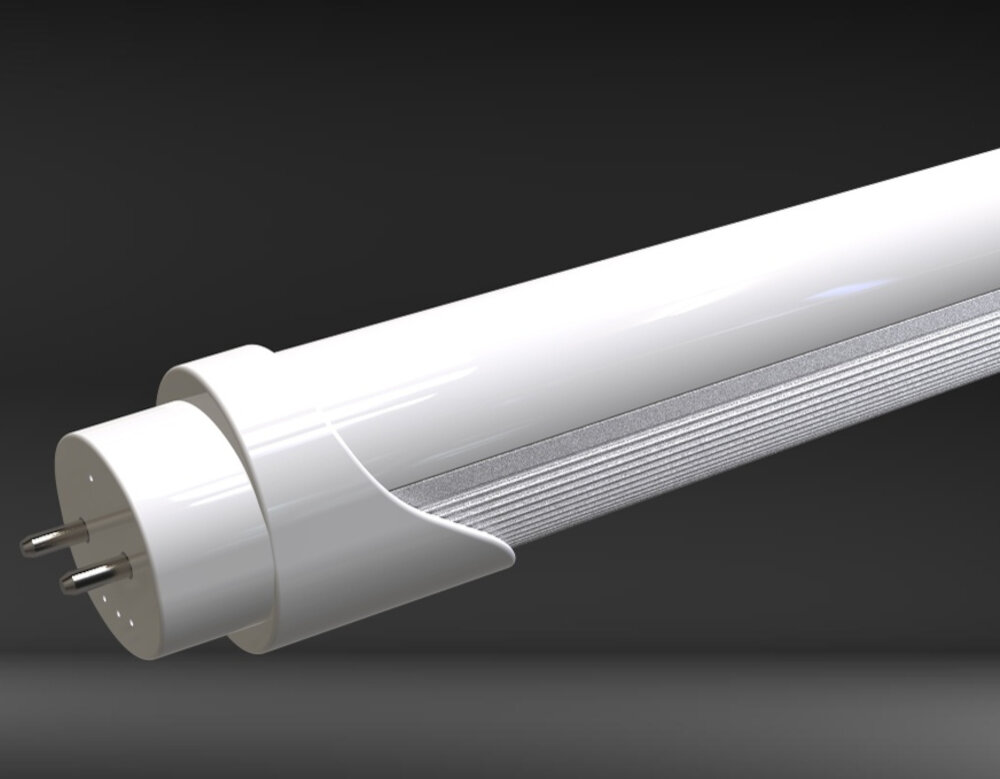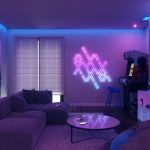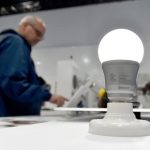LED Light Strips: A StepbyStep Guide on How to Connect and Illuminate Your Space

LED light strips have become increasingly popular over the years for their versatility and ability to transform any space into a colorful and ambient environment. Whether you want to add some accent lighting to your room or highlight a particular area, LED light strips are a fantastic option. Not only are they energy-efficient and long-lasting, but they also come in a variety of colors and sizes to match your unique style and preference. However, connecting and illuminating LED light strips can be daunting for beginners. In this step-by-step guide, we’ll walk you through the process of connecting and illuminating your LED light strips, allowing you to create a beautiful and personalized space in no time. Before we dive into the nitty-gritty of connecting and illuminating your LED light strips, let’s take a closer look at what they are and how they work. LED stands for light-emitting diode, which is a semiconductor device that emits light when an electric current passes through it. LED light strips consist of a series of tiny LED lights mounted on a flexible circuit board. They are powered by a low-voltage DC power supply and can be easily controlled with a remote or dimmer switch. LED light strips are not only aesthetically pleasing but also practical, as they can be used for a variety of purposes, such as task lighting, accent lighting, and mood lighting. With this guide, you’ll be able to make the most out of your LED light strips and enhance your living space.
LED light strips are a versatile and energy-efficient lighting solution that has gained popularity in recent years due to their ease of use and affordability. These strips are made up of tiny LED bulbs that emit bright and vibrant light, and are available in a range of colors and styles to suit any decor. Unlike traditional lighting fixtures, LED light strips are incredibly flexible and can be cut to fit any space or shape, making them ideal for accent lighting, under-cabinet lighting, or even as a primary source of illumination. They are also incredibly easy to install, with adhesive backing that can be attached directly to any surface, and can be controlled using a remote or smartphone app for added convenience. Whether you want to add some ambiance to your home, highlight artwork, or simply brighten up a dark space, LED light strips are a great choice for any DIY lighting project.
LED light strips have become increasingly popular in home decor due to their versatility and aesthetic appeal. These strips are flexible, easy to install, and can be customized to fit any space or design. LED light strips also offer a wide range of color options, from warm and inviting to cool and modern, allowing homeowners to set the perfect ambiance for any occasion. Additionally, LED lights are energy-efficient and have a longer lifespan than traditional lighting options, making them a cost-effective choice for illuminating your space. Whether you want to highlight architectural features, create a cozy atmosphere, or add a pop of color to your decor, LED light strips are a stylish and practical solution.
Types of LED Light Strips

When it comes to LED light strips, there are various types available in the market, each with its unique features and benefits. The most common types of LED light strips are RGB, single-color, and CCT. RGB LED light strips are designed to emit red, green, and blue light, which can be combined to create different colors. These strips are perfect for creating a fun and vibrant atmosphere in your space. The single-color LED light strip, on the other hand, emits only one color, such as white, yellow, or blue. These strips are ideal for creating a relaxed and cozy ambiance in your room. Lastly, the CCT LED light strip is capable of emitting different shades of white light, ranging from warm to cool. This type of strip is perfect for spaces where you need to adjust the brightness and color temperature according to your mood. In addition to these types, there are also waterproof LED light strips that can be used for outdoor or bathroom lighting. These strips are designed to withstand exposure to water and moisture, making them perfect for use in damp environments. Another type of LED light strip is the addressable LED light strip, which allows you to control each LED individually, giving you complete control over the colors and patterns you create. With so many types of LED light strips available, you can easily find the one that suits your needs and preferences. Whether you want to create a cozy ambiance in your bedroom or add some color to your living room, LED light strips are a versatile and affordable solution.
LED light strips are available in various types, each with unique features and applications. The most common types include single-color, multi-color, and RGB LED light strips. Single-color LED light strips emit a single hue of white, blue, red, or green light, making them ideal for task lighting and accent lighting. Multi-color LED light strips, also known as RGBW, feature multiple colors and are perfect for decorative lighting, such as creating a festive ambiance for parties. RGB LED light strips offer unlimited color options and are ideal for creating dynamic lighting effects for events, architectural lighting, and entertainment venues. Additionally, LED light strips come in different lengths, widths, and densities, making them versatile for various applications.
When it comes to choosing LED light strips for your space, there are a few factors to consider including price, flexibility, and color options. In terms of price, LED light strips can range from budget-friendly options to high-end ones with advanced features. Flexibility is another important factor, as some LED light strips can be cut to fit specific lengths or shapes, while others are more rigid. When it comes to color options, LED light strips offer a wide range of hues and color temperatures to suit any mood or style. Ultimately, the best LED light strips for your space will depend on your budget, design preferences, and lighting needs.
How to Choose the Right LED Light Strip

When it comes to choosing the right LED light strip, there are several factors to consider to ensure you get the perfect fit for your space. Firstly, consider the length of the LED light strip. Measure the area you want to illuminate and choose a strip that is long enough to cover the entire space. You can also consider getting multiple shorter strips if you want to create a unique design or highlight specific areas. Another important factor to consider is the brightness of the LED light strip. Think about the purpose of the lighting and how bright you want it to be. If you are using the light strip for ambient lighting, a lower brightness may be more suitable. However, if you want it to be the main source of light in a room, you may want to opt for a brighter strip. Additionally, consider the color temperature of the LED light strip. Do you want a warm or cool tone? This can affect the overall atmosphere of the room and should be chosen accordingly. By taking these factors into consideration, you can choose the perfect LED light strip for your space.
When choosing LED light strips for illuminating your space, there are several factors to consider. Brightness is an essential aspect to consider, as it determines the amount of light that the strip emits. Color temperature is another factor to keep in mind, as it affects the ambiance of the space. The length of the LED light strip is also crucial, as it determines the coverage area and the flexibility of the strip. Other factors to consider include the type of adhesive, the quality of the LED chips, and the waterproof rating. By taking these factors into account, you can choose the right LED light strip for your specific lighting needs and achieve the desired effect for your space.
Selecting the best LED light strip for your space can be a daunting task, but there are a few tips to keep in mind that can make the process much easier. First and foremost, consider the length and width of the space you want to illuminate, as this will determine the size of the LED light strip you need. Additionally, think about the color temperature and brightness you desire, as these factors will impact the mood and functionality of the space. It is also important to evaluate the quality and durability of the LED light strip, as well as any additional features such as remote control or voice activation. By taking these factors into account, you can find the perfect LED light strip to enhance the ambiance and functionality of your space.
Installation Process

The installation process for LED light strips is relatively simple and can be done with minimal tools and expertise. The first step is to determine where you want to place the LED light strips and measure the length needed. Once you have the measurements, cut the LED light strip to the desired length. Most LED light strips come with adhesive backing, so you can simply peel off the protective layer and stick them to the surface. However, if the surface is not flat or the adhesive is not strong enough, you may need to use additional adhesive such as double-sided tape or mounting brackets. Next, you will need to connect the LED light strip to a power source. Most LED light strips come with a power adapter that can be plugged into a wall outlet. Simply plug the power adapter into the LED light strip and then plug it into the wall outlet. If your LED light strip does not come with a power adapter, you can purchase one separately. Once the LED light strip is connected to the power source, it should illuminate immediately. If it does not, check the connections and ensure that the power source is working properly. With these easy steps, you can easily install LED light strips and illuminate your space with beautiful, energy-efficient lighting.
LED light strips are a great way to add ambiance and personality to any room. Installing LED light strips is a simple and easy process that can be done in just a few steps. First, measure the length of the area where the LED light strips will be installed and cut the strips to the appropriate length. Next, clean the surface where the strips will be installed and peel off the backing tape to expose the adhesive. Carefully place the strips on the surface and connect them to a power source. Finally, turn on the power and enjoy the new ambiance that the LED light strips bring to your space. With these simple steps, you can transform any room into a personalized and inviting environment.
Before starting the installation process of LED light strips, it is essential to gather all the necessary tools to make the process smoother and efficient. Some of the tools required are scissors, tape measure, wire cutters, soldering iron, heat gun, and a power supply. A pair of scissors would come in handy to cut the LED strips according to the required length. Likewise, a tape measure would help in measuring the length of the LED strips accurately. Wire cutters and a soldering iron would be useful in connecting the LED strips to the power source. A heat gun would help secure the LED strips in place. Having these tools readily available can make the installation process easier and more efficient.
When installing LED light strips, it’s important to take several safety precautions to avoid any accidents or injuries. Firstly, always ensure that the power source is turned off before beginning any installation work. This will help prevent any electrical shocks or fires caused by accidentally coming into contact with live wires. Additionally, wear appropriate protective gear such as gloves, safety glasses, and non-slip shoes to protect yourself from any sharp or dangerous objects. Always follow the manufacturer’s instructions closely and avoid overloading circuits or using damaged equipment. By taking these safety measures, you can ensure a safe and successful installation of your LED light strips.
Creative Ways to Use LED Light Strips in Your Home

LED light strips have become increasingly popular in recent years, and for good reason. They are a versatile and affordable way to add a touch of ambiance and style to any living space. While they are commonly used for under-cabinet lighting or to highlight architectural details, there are a variety of creative ways to use LED light strips in your home. For example, you can install them along the baseboards of a room to create a soft, glowing effect that adds warmth and depth to the space. Or, you can use them to create a unique accent wall, by placing them behind a piece of artwork or along the edges of a bookshelf. Another creative way to use LED light strips is to incorporate them into your home’s landscaping or outdoor decor. You can install them along the edges of a deck, patio, or walkway to create a stunning visual effect that adds both safety and style. Or, you can wrap them around trees or shrubs to create a whimsical, fairy-tale-like atmosphere that is perfect for outdoor entertaining or relaxing. The possibilities are endless, and with a little creativity and some basic know-how, you can easily transform any space in your home into a work of art with the help of LED light strips.
LED light strips are a versatile and creative way to add ambiance and illumination to any area of your home. In the kitchen, they can be installed under cabinets to provide task lighting or above cabinets to highlight architectural details. In the bedroom, they can be placed around the headboard or underneath the bed frame for a cozy and relaxing atmosphere. In the living room, they can be used to highlight artwork or to create a home theater experience by installing them behind the TV. LED light strips can also be used in bathrooms to provide soft lighting or to highlight mirrors. With endless possibilities, LED light strips are an excellent choice for anyone looking to add a touch of elegance and style to their home.
LED light strips are a flexible and versatile way to add a variety of lighting effects to any space. To create different lighting effects with LED light strips, there are a few tips to keep in mind. First, consider the placement of the strips and the direction of the light. Angling the strips towards a wall or ceiling can create a diffused and indirect light. Second, use different colors and brightness levels to create a mood or emphasize certain areas of the space. Third, consider using a dimmer switch or remote control to adjust the lighting to suit different occasions or times of day. Finally, experiment with different patterns, such as staggered or alternating strips, to add visual interest and depth to the space. With these tips, you can easily create a customized and dynamic lighting scheme with LED light strips.
LED light strips have become increasingly popular in recent years for a variety of reasons. Firstly, they are extremely energy-efficient, using up to 80-90% less energy than traditional incandescent bulbs, resulting in lower energy bills and reduced carbon footprint. Secondly, they offer a wide range of colors and effects, allowing you to customize your lighting to suit your mood and decor. Additionally, LED light strips are incredibly versatile and easy to install, making them perfect for DIY projects and enhancing any space. They are also long-lasting, with a lifespan of up to 50,000 hours, eliminating the need for frequent replacements. Overall, LED light strips offer a cost-effective, convenient, and innovative way to illuminate your space while saving energy and adding ambiance.
LED light strips are a versatile and dynamic way to illuminate and enhance your space. With the ability to customize the color, brightness, and pattern, you can create a unique and personalized atmosphere that suits your style and mood. Whether you want to add a pop of color to a room or create a cozy ambiance, LED light strips can do it all. Plus, their energy efficiency and long lifespan make them a smart and sustainable lighting solution. By following the step-by-step guide on how to connect and install LED light strips, you can transform any space into a stunning and inviting environment. So, go ahead and get creative with your LED light strips and bring your space to life.
Conclusion

In conclusion, connecting and illuminating your space with LED light strips is an easy and enjoyable process. By following the step-by-step guide, you can create a beautiful and personalized environment while also saving energy and money. LED light strips offer endless possibilities for creativity and can enhance any space with their vibrant colors and versatile lighting options. So, whether you’re looking to add some ambiance to your home, office, or outdoor area, LED light strips are a great choice that will not disappoint. So, go ahead and let your imagination run wild and bring some light into your life with LED light strips!




